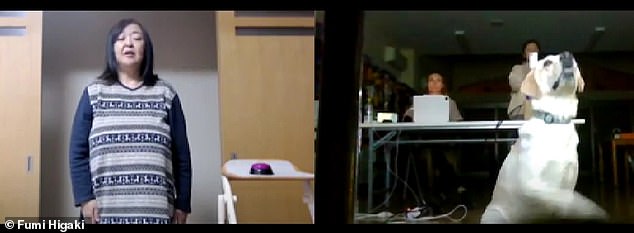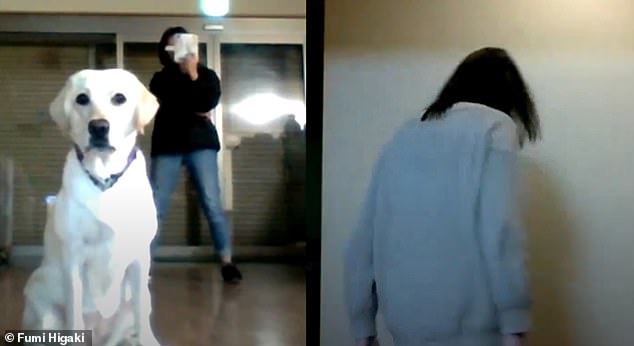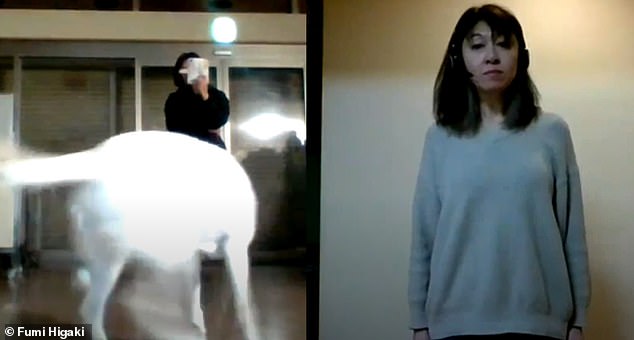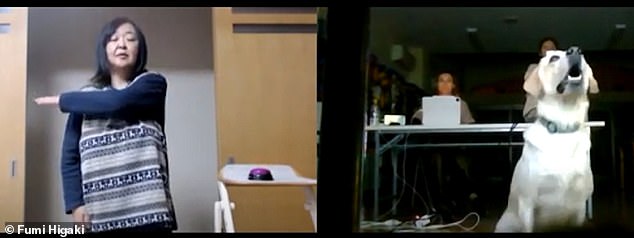It is often said that dog owners begin to take after their pets after years of being together.
But a new study suggests that this transformation actually goes both ways: Dogs can copy humans.
Researchers at Budapest’s Eotvos Lorand University discovered that dogs can imitate humans, even over video calls.
The team trained two dogs to imitate human actions, such as spinning in a circle, knocking over a bottle and even walking backwards.
“This innovative method could expand research on other potential cognitive abilities and could also be extended to other species,” said lead researcher Claudia Fugazza.
Researchers at Eotvos Lorand University in Budapest discovered that dogs can imitate human actions, even through video calls.

The team trained two dogs to imitate human actions, such as spinning in a circle, knocking over a bottle and even walking backwards.
In the study, the team set out to understand whether dogs can be trained to copy our actions.
They enlisted the help of two dogs: Tara, a male Golden Retriever, and Franc, a female Labrador Retriever.
Using video conferencing software, the dogs were shown life-size video projections of their owners, who were located remotely.
The owner would perform an action, before verbally telling the dog, “Do it!”
The experiment tested the dogs’ imitation skills from three different camera angles: front, side and top.
Some of the actions (walking backwards, turning, pressing a button and lying down) were practiced for the first time with the human being in person.

Using video conferencing software, the dogs were shown life-size video projections of their owners, who were located remotely. The owner would perform an action, before verbally telling the dog, “Do it!”

The experiment tested the dogs’ imitation skills from three different camera angles: front, side and top.
However, other actions were seen for the first time via the video call, such as lifting an object, touching a pole with your nose, and knocking over a water bottle.
The results revealed that the dogs could imitate actions observed from both the frontal and side angles, perspectives they often encounter in their daily lives.
However, they had difficulty when trying to imitate actions seen from a higher angle.
“One of the actions demonstrated included knocking over a plastic bottle, which was demonstrated from an aerial view,” said Fumi Higaki, co-author of the study.
‘My dog Tara watched my demonstration on the screen, looked for the bottle in her room in front of the screen, and then knocked it down.
“But it was difficult for him to replicate other actions with an aerial view.”
In addition to being very cute, researchers hope the findings will help improve our understanding of the relationship between man and dog.
“This study, although exploratory, not only improves our understanding of how dogs perceive and interpret human actions, but more importantly, this innovative method could expand research on other potential cognitive abilities and could also be extended to other species”. Dr. Fugazza added.


